THE BLOOD BUBBLING IN SARATOGA FIELD
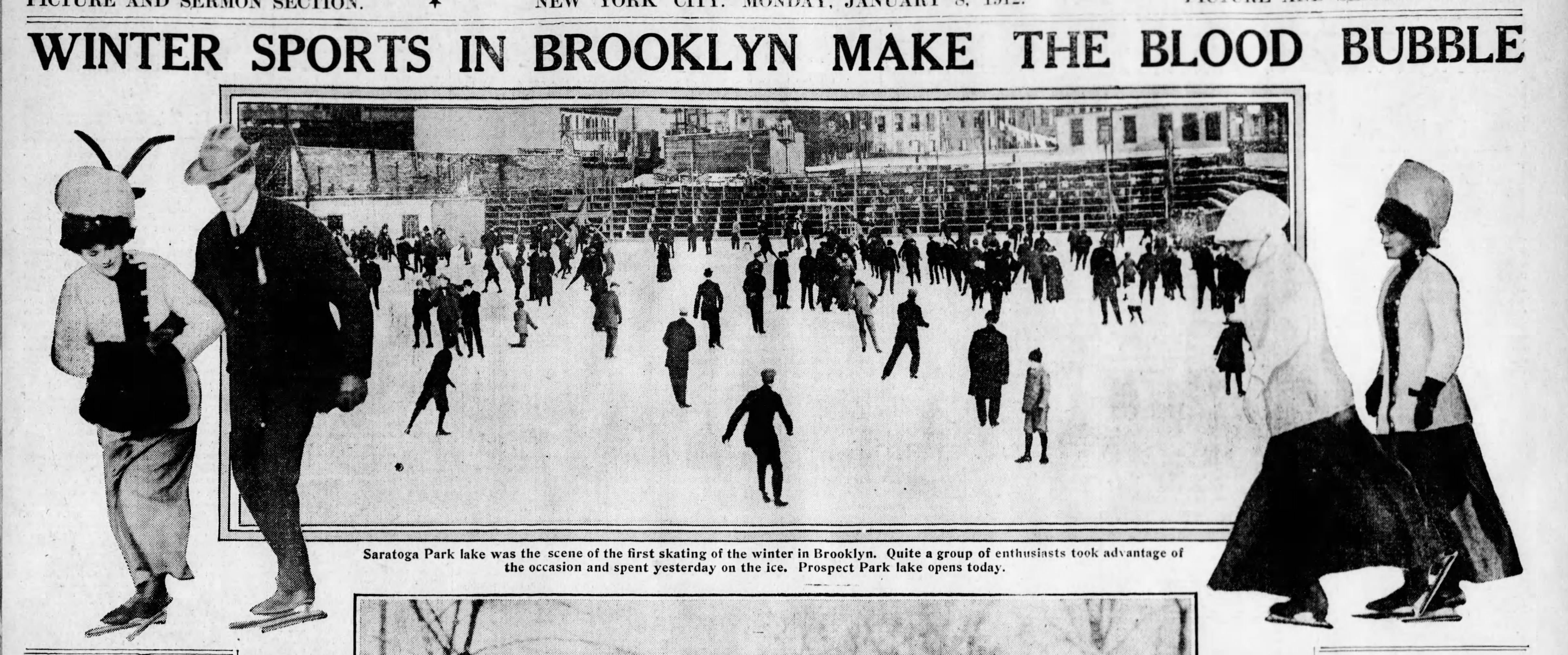
(The picture above shows one of the last years – 1912 – that Saratoga Field was used for skating – or any sports, for that matter – as the entire lot would be developed later that year. The image shows the “first skating” of 1912 in Saratoga Fields. Brooklyn Daily Eagle, Mon., 8 January 1912.)
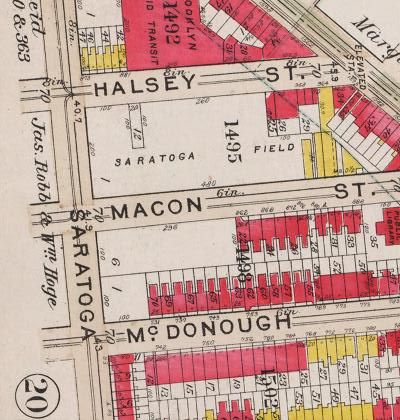
After Saratoga Park was built, the block due east of it – formerly used as a the horse market which sat across the street from the Halsey streetcar stables – became know as Saratoga Fields.
This large lot which abutted Broadway, Halsey and Macon, became the stand-in location for circuses through about 1905, and then for assorted sporting events afterwards through early 1912.
Because of its proximity to Saratoga Park, though, for a number of years after the park’s construction, Saratoga Field continued to be referred to as Saratoga Park.
Run by the Saratoga Amusement Company (for circuses and assorted sports from the early 1890s), they had two main draws, from the people living in the community, to pay the rent. In the winter, they provided skating facilities to the masses, by flooding the field and making a huge outdoor skating rink, which was extremely popular throughout the winter. In the summer, the company improved the lot for use by semi-professional baseball teams, which flourished in this part of Brooklyn.
There were countless ball teams from the area which vied to defeat one another on a daily basis – and the competitions were covered keenly in the local papers throughout the season.
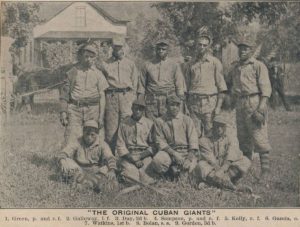
Local athletic groups (high school, semi-pro, and neighborhood teams) and traveling Negro League Teams, such as the New York Black Sox, the Havana Red Sox, and the Cuban Giants, played numerous games at Saratoga Field.
From time to time, major league teams, such as the Brooklyn Superbas, the New York Giants, and the Brooklyn Dodgers, would play exhibition games on the turf – sometimes against a local semi-pro team. And whether the draw was for a major league team or a high school competition, upwards of 5-6,000 onlookers was not an unusual figure.
Starting in 1905, when the field became exclusively used ins season for baseball games, Saratoga Field was the official home field of the Howards, until 1912, when the land was developed. It was also, during this time, rented out by Boys High School starting in 1906 and Erasmus Hall High School starting in 1907.
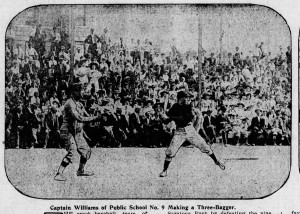
Around 1905 the circuses stopped using Saratoga Field, when the Amusement Company further developed the field with stands and other improvements for baseball, which was becoming increasingly popular and profitable.
On May 5, 1906, the Howards hosted the Monarch Athletic Club for a grand opening match at Saratoga Fields, newly enclosed and fitted with extensive stands for spectators. The opening day game attracted 3,000 spectators. Borough President Bird S. Coler threw out the first ball, and, in a strange twist to opening day festivities, later tangled with Capt. O’Reilly of the police who tried to shut the game down because of fly balls leaving the ballpark.
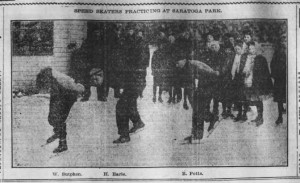
By 1908, Saratoga Fields was also being used for amateur and semi-pro speed skating exhibitions and races, as well as for marathon races.
A marathon craze, which apparently had hit the nation, caused Brooklyn to hold three marathons in 1909 to the delight of onlookers and amateur sports fans.
One, held at Saratoga Field on 8 May, had upped the ante in terms of prizes to those of “exceptional value.” The first five to finish were to receive diamond rings, while the next ten to finish would receive diamond cuffs, buttons, and stickpins.
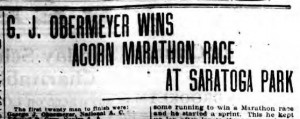
The race attracted about 55 contestants, and “over half of this number were in fit shape to finish.” Obermeyer, the “dark horse of the race,” who won the race in 3 hours, 1 minute and 56 seconds, had worn a “huge linen hat” to “keep off the burning rays of the sun.”
By 1910, the Saratoga Field marathon – now a night race, “brilliantly illuminated” by electric light – had begun to attract international contestants. Citizens of Italy, Sweden, Finland, and Canada would run alongside local Brooklyn favorites. One of the Italians, Umberto Blasi, had been a three-time winner of the Italian National Marathon, and had been a competitor in the 1908 Olympics. In the end, the Finn, William Kolehmainen, brother of Hannes Kolehmainen (hero of the 1912 Stockholm Olympics) won the race, covering the regulation distance in 2:51:09. This marathon would be the last one held at Saratoga Field.

On April 28, 1912, the last baseball game at Saratoga Park saw the 999 Club (formerly Wall’s All Leaguers) defeat the Eastern Colored Stars, 3 to 2. The Brooklyn Eagle was moved to declare the close contest the “best game seen at this park,” while sadly reporting the news that demolition work had already begun.
What would happen on the lot next would attract an entirely different customer.
———————————————————————————————————————–
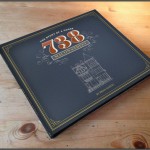 The story you have just read was composed from extensive historical research conducted by The Brownstone Detectives. We perform in-depth investigations on the historic homes of our clients, and produce for them their very own House History Books. Our hardbound books include an illustrated and colorful narrative timeline that will bring the history of any house to life. Contact us today to begin discovering the history of your home.
The story you have just read was composed from extensive historical research conducted by The Brownstone Detectives. We perform in-depth investigations on the historic homes of our clients, and produce for them their very own House History Books. Our hardbound books include an illustrated and colorful narrative timeline that will bring the history of any house to life. Contact us today to begin discovering the history of your home.